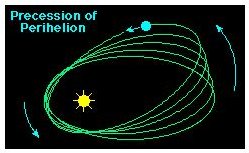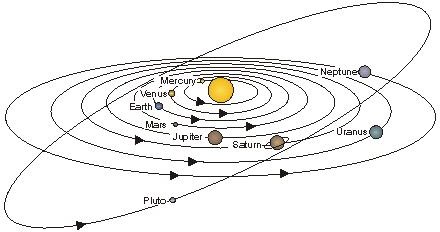How Gravity Affects the Orbit of a Planet and Planetary Alignment
Planetary Motion
Before discussing the effect of gravity on planetary alignment and how a planetary alignment affects the gravity in a planet, it is important to talk about the elements involved and how they have been explained through our history. Let’s begin with the simplest concept of an orbit: a path traced by a body that is gravitationally attracted by another body. Johannes Kepler was an atronomer of the late 16th century that determined three laws to describe the motion of planets. He considered the Copernican system, which modeled the Solar System with the Sun at the center, correct in its essence. Kepler managed to solve the problem of the discrepancy between the proposed model and the observed orbit of Mars by realizing that the orbits of the planets consisted of ellipses rather than circles, as assumed by Copernicus.
Almost a century later, Newton described and modeled the existence of an attractive force between bodies that has the property of mass. Newton applied the laws of motion he had developed to planetary motion in order to provide a mathematical model for the principles of this movement.
The Newtonian Law of Gravitation leads to elliptical orbits for the planets and states that a massive body orbiting the sun would perform an elliptical orbit where the perihelion (point of closest approach) is fixed. However, the perihelion of the planets’ orbits may precess, since the presence of other planets perturbs these orbits. These perturbations are small, but not negligible. Neptune and Pluto were discovered because they affected other planets orbits and that was detected. Although the Newtonian Physics was used to predict a planet’s orbit and alignment, the observed orbit of Mercury could not be correctly predicted. The only feasible explanation for the precession of Mercury’s orbit was the existence of another planet very close to the Sun. Such a planet has never been found.
The General Theory of Relativity was published by Albert Einstein in 1915 and explains the gravitational attraction between massive bodies as a consequence of the changes caused by these bodies in space and time. General Relativity explains gravitation as a curvature of the space in the vicinity of a massive body. Objects with greater mass cause greater curvature. This theory provides the understanding of certain phenomena, such as:
- Black holes (a region of space with a very compact and massive body that is able to exert an extremely high attractive force on bodies and light close to it)
- Gravitational lenses (creation of multiple images due to the bending of light by gravity)
- Gravitational redshift
- The precession of the orientation of Mercury’s orbit in space over time

The last phenomenum is described by the general relativity as a consequence of the curvature of space-time caused by gravitation. Einstein’s calculations matched the observed extra precession of the planet’s orbit.
In this sense, gravity affects planetary alignment, since this phenomenum depends on the planets orbits.
A Word on Planetary Alignment
The end of the world was affirmed to happen in 1983 in the book of John Gribbin, The Jupiter Effect, as a consequence of a planetary alignment that was said to take place once in a thousand years. As far as all of us reading this are concerned, the world is still here. Doomsayers claim that gravity caused by a planet alignment has great influence on Earth and is able to cause disasters never before seen in the history of human kind. Could that be true?
First of all, the complete alignment of all the planets in the Solar System is impossible because the planetary orbits are tilted slightly and the orbit of Pluto is highly inclined (18 degrees) in relation to the orbit of the Earth. According to a lot of scientists, since the other planets are far away from Earth, the intensity of the total force they exert on it is very small. Thus, the resultant gravity of other planets caused by planetary alignment (or something similar) does not have greater influence on Earth. However, some people do not agree with that. They say that the models used to predict the effect of Solar System alignments on Earth don’t usually take the inner planets (Mars, Venus and Mercury) into account, as well as other facts. These researchers claim that the use of a more accurate model (in their words) - the model of Universal Vortical Singularity - provides evidence that Solar System alignments impact natural events on Earth. However, they recognize that more studies on this subject are necessary in order to get a final conclusion.
References
NASA - Planets for Dessert https://science.nasa.gov/science-news/science-at-nasa/2000/ast30mar_1m/
Dr. Donald Luttermoser - Planetary Alignments: Fact or Fiction? https://www.etsu.edu/physics/etsuobs/starprty/22099dgl/planalign.htm
University of California - General Relativity and Black Holes. https://cass.ucsd.edu/public/tutorial/GR.html
Cox, Arthur, ed., Allen’s Astrophysical Quantities, 4th ed., 2000, Springer-New York
About.com - Newton’s Law of Gravity https://physics.about.com/od/classicalmechanics/a/gravity_4.htm
UVS Model - Universal Vortical Singularity enlightenment on Solar System alignment effect. https://www.uvs-model.com/WFE%20on%20Solar%20system%20formation.htm
